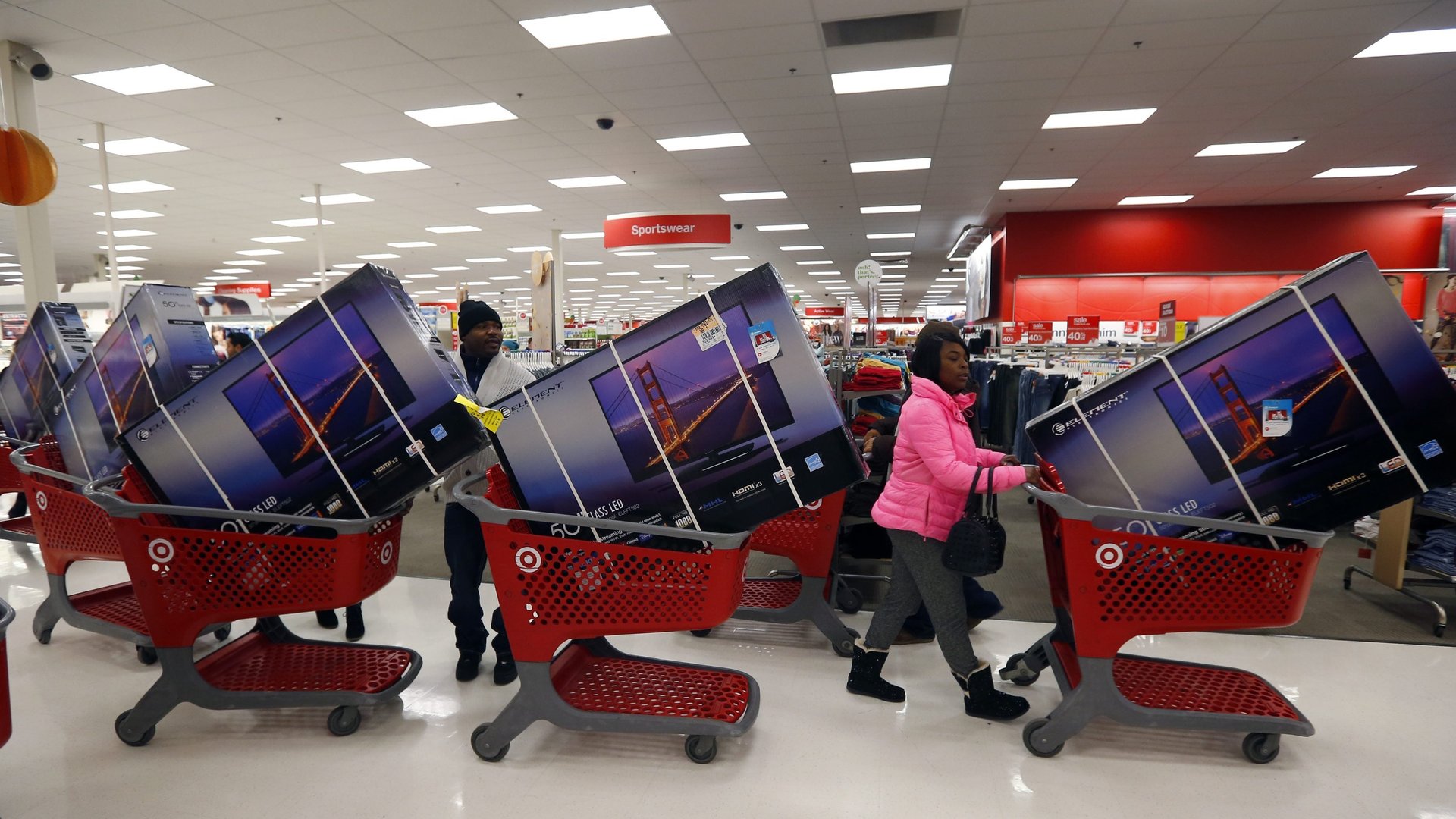Americans spent a record $10.8 billion with their phones over the holiday weekend
There’s one reason why stores weren’t as packed on Black Friday this year.


There’s one reason why stores weren’t as packed on Black Friday this year.
Instead of braving the crowds at big box retail stores over the Thanksgiving holiday weekend, a record number of Americans shopped on their phones. Nearly a third of the $9.2 billion in online sales in the US during Cyber Monday (Dec. 2) were made with a smartphone, according to Adobe. At roughly $3.1 billion, that’s an estimated $1.3 billion more in mobile purchases than shoppers made during Cyber Monday 2018.
The surge isn’t strictly due to consumers using their phones to sneak in some online shopping during work on Monday. On Thanksgiving Day, almost half of the $4.2 billion spent on online shopping came from smartphones, Adobe told the Financial Times. Black Friday saw another $2.9 billion of online sales through smartphones.
In all, shoppers spent $10.8 billion via their smartphones over the period of time beginning on Thanksgiving Day (Nov. 28) and ending on Cyber Monday, an Adobe analyst told Quartz. That’s more than a 45.1% increase from the amount US shoppers spent over the same period last year.
The numbers reflect a shift in consumer spending habits, from brick-and-mortar to online shopping to mobile shopping, that has been in the making for a little under a decade. Back in 2013, the New York Times asked, “Do people actually shop on phones? The answer is decidedly yes”, noting that a modest 11% of ecommerce sales over the past year came from smartphones. In 2019, that number has jumped to 36% of all ecommerce sales, according to Adobe.
People are currently more tied to their smartphones than ever. Virtually every social media site, from Facebook to Instagram to Pinterest to TikTok, has an online shopping component. Biometric authentication and facial recognition on smartphones are an added security boost. Mobile wallets like Apple Pay and Google Pay have also become more ubiquitous.
Compared to the rest of the world, the US is late to the game when it comes to buying on their smartphone. In China, the world’s leader in ecommerce, nearly 76% of its $1.2 trillion online shopping market comes from smartphones, according to JP Morgan. Chinese consumers are used to shopping on social media, such as the many online shops now on WeChat. South Koreans spent a record $9.9 billion on online shopping in October, with more than two-thirds, or $6.5 billion of that amount, made via smartphone.
The growth of mobile shopping didn’t necessarily hurt brick-and-mortar retail during the Thanksgiving holiday weekend. Americans spent more both online and in physical stores this Black Friday. Pictures of empty stores over Thanksgiving weekend that cropped up on social media may have told a different story. It was clear many people were at home, enjoying leftovers and shopping online, rather than hitting the mall. While it’s true that store visits were down, the thinner crowds were spending more.
Physical stores are also spreading holiday sales and promotions over a longer period of time. Less frenzied stores may have paved the way for more significant purchases. Brick-and-mortar sales on Black Friday increased an estimated 4.2% this year, according to SpendTrend data.